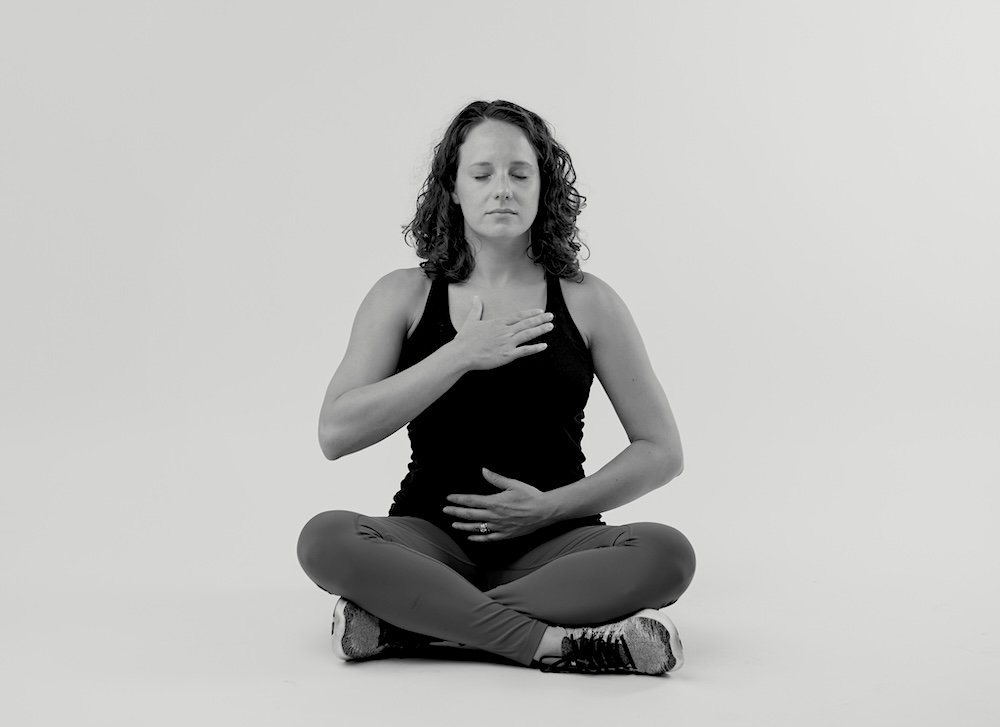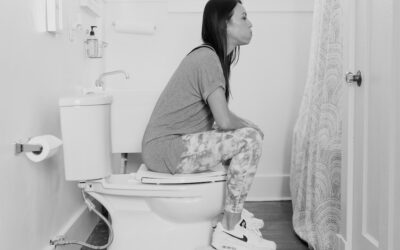Occasional stress is part of being human. These days, though, many people’s stress has escalated from once-in-a-while to chronic. You may be aware that chronic stress can wreak havoc on your cardiovascular health, digestive health, and mental health. Additionally, a connection exists between stress and pelvic floor tension.
- Problems peeing and pooping? Check.
- Issues with sex and intimacy? Yep.
- Pain down there? Uh-huh.
Stress can cause our pelvic floor muscles to actively contract—the pelvic-stress reflex response—and that can lead to overactive pelvic floor muscles.
To take care of these uncomfortable issues, we need to address stress and pelvic floor tension.
Four Signs and Symptoms of an Overactive Pelvic Floor
An overactive, or hypertonic, pelvic floor occurs when our pelvic floor muscles cannot fully relax. There are tons of reasons why this happens, including chronic stress!
Hypertonic pelvic floor symptoms include:
- Painful sex
- Painful sitting
- Painful abdominal muscles
- Problems pooping and peeing
The Connection Between Stress and Pelvic Floor Tension.
We often look for purely physical explanations for our pelvic floor challenges. But there’s also a mind-body relationship between stress and pain.
Depression, anxiety, and sleep disorders (all of which are worsened by stress and are stressors in and of themselves) are associated with pelvic pain disorders in women.
Now, bear with me. We’re about to get science-y.
When stressed or anxious, the body responds via the hypothalamic-pituitary-adrenal (HPA) axis. This neurological feedback system is responsible for the release of important stress hormones – like epinephrine, norepinephrine, and cortisol.
Epinephrine and Norepinephrine
Epinephrine (adrenaline) and norepinephrine can contribute to pelvic pain. These hormones work together to increase blood flow in stressful situations. This causes our muscles to enter fight-or-flight mode— aka they tense up.
And when we’re constantly under pressure, our muscles are never able to fully relax.
Both epinephrine and norepinephrine tend to enter and leave our systems quickly. However, when your stress or anxiety is a chronic concern, cortisol might be to blame for pelvic pain.
Cortisol
When we experience constant stress, our systems release cortisol repeatedly. This stress hormone tends to stick around for hours after the stressor. Eventually, our bodies simply can’t make any more cortisol. This state of exhaustion creates more problems, like lower immune response, poor sleep, and pain.
Our HPA axis can become too active when we experience long-term stress. This stress can come from trauma, abuse, lack of sleep, hormonal changes, or managing a chronic illness. This means it could start responding to non-stressors as if they were stressors. And that creates a constant cortisol-producing-and-exhaustion cycle.
People often overlook this mind-body connection. So to truly treat pelvic floor tension and pain, we need to think more holistically.
Easing Symptoms of Stress and Pelvic Floor Tension
#1 Address the stress.
Decreasing chronic stress and pelvic floor tension can be done together. The less stressed we feel, the more our muscles can relax! From practicing yoga to seeing a professional therapist, making small changes over time can help decrease toxic stress.
#2 Pause on Kegels.
Kegels and other tightening exercises can make matters worse. We need to use relaxation techniques before we can appropriately strengthen our pelvic floor muscles. So, stop the cookie-cutter Kegels to take the pressure off your pelvic floor.
#3 Practice diaphragmatic breathing.
Sometimes we just need to take a breath. Lie on your back with your knees bent.
Put one hand on each side of your rib cage. Deeply inhale, inflating your ribcage, as if it’s opening up like an umbrella, then slowly exhale. Allow one breath to flow smoothly to the next and repeat for 10-20 breaths.
#4 Use lots of lube.
Lube improves sex, reduces friction, sensitivity, and pain during sexual activity. Use a water-soluble lubricant or natural oil—like coconut oil—during intercourse and feel the difference. Or, try a CBD-based product. Your downstairs will thank you!
#6 Try vaginal dilators.
To start relaxing your pelvic floor, particularly before sex, tampon insertion, or a pelvic examination, try a little stretch. Vaginal dilators look like a set of tampons of increasingly larger diameter. Putting these inside the vagina can reduce sensitivity, calm muscles, and make scar tissue at the vaginal opening softer.
#7 Perform pelvic floor massage.
A Therawand is a useful tool for relieving pelvic floor tension. It’s a tool with a curved tip that applies pressure to tight muscles, helping them relax. You can use this tool in the deeper pelvic floor muscles or at the opening to soften pelvic floor muscles or any scar tissue.
#8 Poop and pee the right way.
Did you even know there was a right way to go to the bathroom? To help you pee more effectively:
- Sip water throughout the day to prevent concentrated urine from irritating your bladder.
- Avoid drinking fluids two hours before bed to eliminate frequent nighttime wakeups.
- Decrease your consumption of alcohol, coffee, carbonated drinks, and spicy or acidic foods to help urinary urgency.
- Avoid hovering over the toilet, which clenches your pelvic muscles and prevents complete bladder emptying.
- Skip those “just in case” pees. They can cause your bladder to shrink and increase urgency over time.
- Avoid waiting too long to pee, which can overstretch your bladder.
- Stop “power peeing,” as straining and pushing weakens your muscles.
- Sit down, relax, and breathe when you pee!
And for pooping:
- Avoid dairy and spicy and greasy foods, which make poop too soft.
- Eat plenty of fruits and veggies for their fiber and magnesium.
- Use a squatty potty or stool under your feet and lean forward to put your pelvic floor muscles in prime pooping position.
- Hydrate, hydrate, hydrate to decrease constipation.
- Exercise often to keep things moving.
- Always poop when you have the urge to poop, as delaying leads to straining when you do decide to go.
Relaaaaaaax.
The Relaxation Series is only available inside the V-Hive, an online membership platform with on-demand workouts to strengthen or relax your pelvic floor and core. You deserve to be free of chronic pelvic pain and tension. Join today!
Sources and Further Reading
Physiopedia. (n.d.). Impact of stress and cortisol levels on pelvic pain and pelvic stress reflex response. Physiopedia.
Witzeman, K. (2021, August 25). The complex intersection of pelvic pain and mental health in women. Practical Pain Management.





